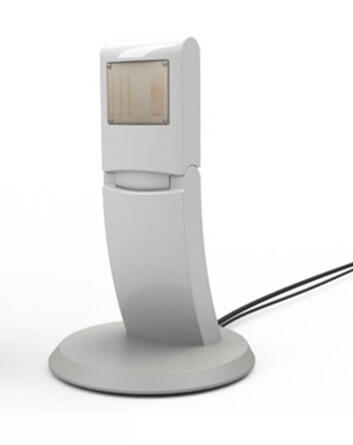A research group consisting of Associate Professor Takuya Sakamoto of the Kyoto University Graduate School of Engineering and Project Professor Toru Sato of the Kyoto University Institute for Liberal Arts and Sciences announced the commercialization a non-contact sensor for use in monitoring human bio signs for research purpose in collaboration with MaRI Co., Ltd. and MARUBUN CORPORATION on February 26. The product, named VitaWatcher, is priced at 499,400 yen (tax included) and offered for use in monitoring services by universities and other research organizations, makers of medical equipment, nursing homes, and nursery schools. It is currently under review by the PMDA, with the aim to receive certification as a medical device before the end of the year.

(Credit: Kyoto University)
Previously, the team headed by Associate Professor Sakamoto had developed a non-contact sensor that detects bio signs using millimeter wave radar, with the aim of helping to prevent the sudden death of infants when lying face down. Millimeter waves are able to pass through clothing and measure the surface of bodies with a high level of precision. The group finished a prototype in 2018 that was able to detect breathing with a high level of precision, but due to phase instability, measurement precision would fall when measuring multiple people simultaneously, and the device also cost several tens of millions of yen. R&D was then continued until 2020, during which improvements were made to the device so that it could identify different individuals, even when close together, by feeding it the breathing cycle of each person and combining that with positional data. The cost was also lowered, allowing commercialization.
According to Sakamoto, "In the lab, the device can sense a range of up to seven meters, and can accurately identify individuals as long as they are about 50 cm apart. There is also no limit to the number of people it will sense." Hirofumi Taki of MaRI Co., Ltd. adds that "we guarantee a sensing distance of 1.5 to 2 meters with the current product, because that's the maximum distance we had room for during the proving tests at the Kyoto University Hospital."
By using this sensor, it is possible to monitor whether an individual's breathing and pulse is normal, and where they are in the room, without them needing to be aware and without requiring them to wear any device such as a smart watch. Also, the use of millimeter wave radar means that their condition can still be monitored even when they are under blankets, meaning that the device can also be used to detect sleep apnea syndrome.
Sakamoto explains, "Before, if you wanted a network you would have to connect cables, but now, wireless networking has become the norm and it's hard to imagine living without WiFi. In the future, using non-contact sensors to monitor children will be something that everyone does."
The product is expected to be deployed for a variety of applications, such as the monitoring of children in nursery schools and daycare centers, monitoring of patients at nursing homes and hospitals, and even for monitoring elderly parents who live far away by using the positional information to measure their level of activity. The product comes with free evaluation software for estimating bio signs when using the product for technical evaluation or research purposes. The product will be sold by MARUBUN CORPORATION.
This article has been translated by JST with permission from The Science News Ltd.(https://sci-news.co.jp/). Unauthorized reproduction of the article and photographs is prohibited.




